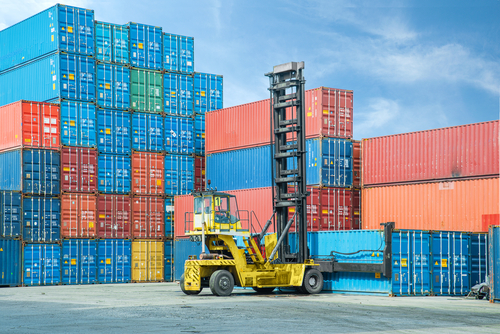Some are increasing their use of stopgap measures, such as storing goods in idle truck trailers, while others are making more concerted efforts to extract additional capacity from overburdened distribution networks or to reduce costs by sourcing products and raw materials closer to home.
Retailers, manufacturers, and distributors, including smaller businesses struggling to compete with well-capitalized competitors, are responding to a squeeze on transportation space as companies have rushed to replenish pandemic-depleted inventories over the last year. Demand is outstripping capacity availability, from ocean shipping to trucking and parcel-delivery networks, driving up supply-chain costs and putting pressure on margins.
With the seasonal rush over, the strategies companies implemented in 2021 are still relevant because shipping rates are expected to rise further in 2022 as strong U.S. consumer spending drives ongoing strong freight demand and the supply-chain crunch.
"They are looking at every way they can to reduce their own costs so that the equation works for them from a profitability standpoint," said Lisa Ellram, a supply chain management professor at Miami University Farmer School of Business in Oxford, Ohio.
Large companies with deep resources, such as Home Depot Inc. and Walmart Inc., have taken costly steps, such as chartering ships, but midsize and smaller businesses have fewer resources to draw on.
HomeLife Media LLC, an Anaheim, California-based company that owns iHeartCats.com and other e-commerce sites that sell pet-related products, imports the majority of its goods from China but began purchasing jewelry, dog supplements, and other items from U.S. suppliers after the company's ocean freight expenses multiplied and rising airfreight costs cut into profits.
HomeLife's vice president of information technology, Ivan Rodriguez, stated that the company intends to source more goods from domestic U.S. suppliers. It has also begun working with a metalworking company in Mexico that creates pet-themed wall art and ships some orders directly to HomeLife customers. "They do daily truck deliveries to Texas, and they have a facility where they do their fulfillment," Mr. Rodriguez explained.
Shipping Pilot LLC, based in Cleveland, avoided some of the past year's rise in warehouse rents by signing a three-year lease in May, according to Greg Airel, the company's president. However, that advantage has worn off as increased e-commerce demand has pushed more goods through its single facility.
Shipping Pilot has outgrown its 20,000-square-foot space and is looking for semi trailers to store excess inventory at unused truck docks. Some of the equipment Mr. Airel is interested in isn't in good enough condition to be transported, so he's thinking about covering the trailers with tarps because parts for repairs are scarce.
He anticipates that the company will require 10,000 square feet of additional storage space next year, and the trailers will help him avoid "paying those crazy prices" for new warehouse space. Mr. Airel, however, stated that he will "have to eat that cost one day, when I run out of tractor trailers to buy or find."
Bells of Steel USA Inc., a direct-to-consumer home fitness equipment retailer, is raising prices for its customers after the cost of shipping a 40-foot container from Asia nearly quadrupled from early 2020 to the summer of this year, according to Bryan Chu, chief financial officer of the company's Canadian owner.
"Basically, we try to divide things between us and the consumer," he explained. "We accepted some lower margins, but we also raised our price," selling some equipment for 10% to 12.5 percent more. Some items were out of stock for extended periods of time, such as belt squat machines that were stuck on a container ship idling off the Port of Los Angeles from early November to mid-December.
"Price increases are definitely on the table, they simply have to be," Julia Tunstall, co-founder of A Bar Above, a bartending tools retailer based in Carlsbad, California, wrote in an email. Hillside Ventures LLC, the company's legal name, recently paid approximately $29,854 for shipping a single ocean container, including an additional charge for delays in handling the box. This is in comparison to the pre-pandemic average container cost of around $4,804.
"But I think we need to do that more like quarterly nowadays," she wrote, referring to how the company has traditionally assessed the prices it charges.
SanMar Corp., an apparel and accessories wholesaler based in Issaquah, Wash., is facing rate increases across all modes of transportation in 2022 and is focusing on "making ourselves a very attractive shipper" to ensure it can move its goods as needed, according to John Janson, senior director of global logistics at the Issaquah, Wash.-based company, which ships up to 100,000 parcels per day.
SanMar defines this as getting truck drivers in and out of the company's facilities as quickly as possible while not tying up carriers' equipment. According to him, the company preloads trailers for United Parcel Service Inc. to reduce wait times and aims to get drivers back on the road in 30 minutes or less.
"Price is important, but capacity is even more so," Mr. Janson said.













